| Рубрикатор |  |
 |
| Все новости |  |
World News |  |
 |
Mobile reformation: Piecing together Mobile World Congress
| 25 февраля 2010 |
American poet John Godfrey Saxe (1816-1887) based his well-known poem about misconceptions on an old tale from India. It is a salutary warning on the shortcomings of uncoordinated investigations on component parts and their relationships with the whole. Similarly, we should be recognise the limitations of piecemeal, space-by-space analysis of announcements, speeches and demos at trade shows such as the Mobile World Congress. Whereas various individuals and constituencies may perceive the show differently, depending upon their vantage points in the industry, there are many interdependent parts that make up the bigger picture of an entire industry in transformation.
The MWC's worldwide popularity and diverse participation ensures a fair representation of what is going on in the mobile industry. Here is my alignment of the fabled blind men's perceptions on the elephant's body parts to key aspects of Barcelona 2010:
Spear = tusk: Video; the bandwidth-hungry killer application that is spearheading technological developments and stoking demand across the entire ecosystem. Multiple HD and 3D streams are made possible by Moore's law effects in silicon with miniaturization and impressive power efficiencies in ARM- based processors, multiple cores and GHz clock speeds. Texas Instruments, Nvidia and Broadcom had some eye-popping demos. Qualcomm showed off its Mirasol screen technology that will before long render the above onto colour screens that need only ambient light and draw a small fraction of the power used by LCDs.
Snake = trunk: Mobile sector incursion by friends of the masses from the PC and Internet world. Anti-evil Google is engaging in a serpentine manner throughout the mobile ecosystem. With "Mobile First", it proclaims to bring the cloud and other good things to mobile. Following in 3's footsteps, Verizon Wireless also seeks to increase customer satisfaction and loyalty by opening up its device and customer access to Skype, with the world's largest base of international callers. However, while omiabsent at these shows, Apple is still the most profound and talked-about exemplar.
Tree = leg: The pillar of LTE upon which next generation connectivity will stand, with broadband data rates, low latency and an all-IP core for everything including voice calls, but it needs a crutch. All the big OEMs were bragging about their customer wins, including trials and commercial deployments. The GSMA also used the show to anoint the preexisting IMS-based OneVoice initiative with a switch to the new VoLTE acronym. WiFi is the supplement that many a nay-sayer--myself included--has eventually realized is essential to off-load the escalating traffic that macronetworks cannot accommodate. WiFi along with femtocells are helping mitigate the capacity crunch, while also improving coverage and speed in places where people congregate...
Fan = ear: The smart network governor that can listen and adapt to changing conditions and customer needs by cooling traffic flows. The end-to-end customer experience and charging accordingly is what matters. Mobile networks and carrier services are still not up to supporting the increasingly demanding applications and services with major growth in smartphone users. RIM's co-CEO Mike Lazaridis explained at length that BlackBerries are much less of a problem than other devices, such as iPhone, particularly with regard to network signalling demands. I presume that is why I can still have my international all-you-can-eat flat rate data plan on my AT&T BlackBerry. Previous generation networks were not conceived for current usage models and traffic flows. Deep packet inspection enables traffic shaping to smooth-out peaks if the network neutrality police will allow it. Operator support systems are being rationalized and integrated with service oriented architectures including policy controls, subscriber data management, service delivery and more. Vendors are diving in to provide the most holistic solutions with an optimal mix of IT and telecom technologies. Those, such as HP, with a strong heritage in both domains are well positioned for this while classic network equipment vendors emphasize 3GPP standards such as IMS.
Rope = tail: Relatively thin network tails in terms of bandwidth for wireless in comparison to fiber, but the former swoosh everywhere. Among the many forecasts, Ericsson's vision for 50 billion connected devices by 2020 seemed to catch most attention. While I remain sceptical that such a number can be reached so soon, we are definitely heading that way. New devices abound at these shows. Products other than phones were of particular interest this year with much excitement about all the possibilities between smartphones and notebooks including tablets, netbooks and other formfactors. I was shown several smartbook reference designs by chip vendors. These orphans were waiting for adoption by vendors with brand and distribution. I wonder if they came.
Wall = body: The plethora of application platforms and operating systems, applications stores, developers and applications on display. For example, App Planet in Hall 7 was dedicated to this blossoming ecosystem, Ericsson promoted its hosted eStore for white label supply to operators and operators untied around their hastily conceived, the night before announcement, Wholesale Applications Initiative. It was also the queues first thing each morning at the main entrance that made the unwary late for their 9 am meetings, crowds at the Microsoft stand following its Windows Mobile 7 announcement and the hordes gawping at the CBOS girls nearby.
So how should one describe the entirety of the Barcelona beast? Whereas the GSMA owns the show, it neither owns the industry nor controls the overall impression it leaves with MWC attendees. Notwithstanding GSMA's blessing of WAI and VoLTE, the organization and its members are losing their grip on mobile's expanding ecosystem.
The 2010 show revealed an industry undergoing disruption across the board with something of a renaissance resulting from valuable learning and developments in the IT and Internet sectors. The industry is also in the throes of reformation with an expanding ecosystem and a new power structure. For example, handset market leader Nokia is being de-throned (in terms of gross profits and cool factor, if not by sales volumes) by a mobile newcomer that has succeeded despite spurning the mobile industry's Mecca and other institutions. Google, Facebook, Skype and others in the Web 2.0 community also face enormous growth opportunities as mobiles become the world's primary computing and Internet access devices for most of the world's population. Just as with the original renaissance starting in the 14th Centaury, mobile industry change is not an orderly or controlled process. It also has many winners and losers. The nature and extent of change is only fully recognized long after it has occurred.
Mobile operators are suffering from an identity crisis. While seeking expanded roles for themselves, they are somewhat constrained by their individual geographic scope and cannot afford to ignore opportunities beyond what is ordained by or in the purview of the GSMA. Mobile has been massively successful in voice and text with its global diffusion unsurpassed by any other product or service. Development of 3G was lacklustre until a couple of years ago. The iPhone and the unbridled data demand growth that followed have shown a way forward. But this is still just the new beginning.
Keith Mallinson, industry expert, analyst and consultant
Источник: FierceWireless:Europe






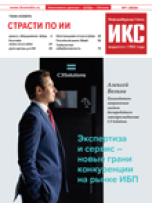

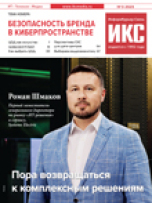


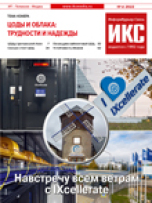
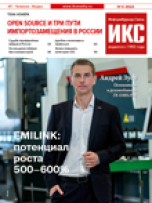
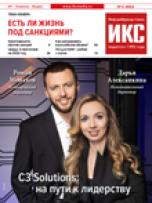
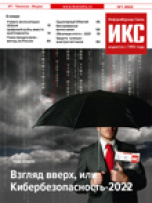
Оставить свой комментарий:
Комментарии по материалу
Данный материал еще не комментировался.